Partner Cards: Two Radeon R9 290s And Five 290Xs, Updated
Gaming Power Consumption
Benchmark System And Procedure
We collaborated with HAMEG (Rohde & Schwarz) to upgrade our power consumption measurement system.
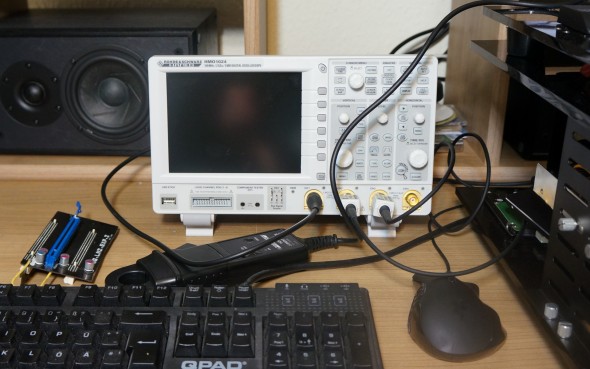
We record all channels and the corresponding oscilloscope value/curves for our measurements. The very precise and, more important, fast current clamps yield 100 mV/A, making it easy to calculate the power based on the voltage. We also record the supply voltage to multiply its value with the recorded amperage. Depending on the resolution we choose, this procedure yields a very detailed power consumption history. We generally set this to 1 ms, allowing us to capture all fluctuations attributable to AMD’s PowerTune or Nvidia’s GPU Boost technology.
| Measurement Procedure | Non-Contact Direct Current Measurement at the PCIe SlotNon-Contact Direct Current Measurement at the External PCIe Power SupplyDirect Voltage Measurement 3.3 V / 12 V |
|---|---|
| Measurement Apparatus | Oscilloscope:HAMEG HMO1024 Four-Channel Digital Oscilloscope with Memory and Ethernet Remote ControlPower Clamp:HAMEG HZO50 (1 mA-30 A, 100 kHz DC, Resolution 1 mA)Voltage Divider Probe:HAMEG HZ154 (1:1, 1:10), Assorted AdaptersDigital Multimeter:HAMEG HMC8012 |
| Bench Table | Microcool Banchetto 101 |
| Test Hardware | AMD FX-8350 (Piledriver), Overclocked to 4.5 GHzCorsair H100i Compact Water Cooling Solution16 GB (2 x 8) Corsair Vengeance DDR3-1866Asus 990FX Sabertooth + Modified PCIe Adapter with Current Loops |
| Power Supply | Corsair AX860i with Modified Plugs (Pickup) |
Power Consumption While Running A Gaming Loop
"How much power does a graphics card draw during gaming?" and "How much heat does it generate under load?" are the most commonly asked questions once we wrap up our analysis of 3D performance. Our testing is made as real-world as possible by measuring cards that have already been warmed up.

This high-resolution measurement shows why power supplies can be overwhelmed unless they have ample output headroom. Even if a PSU's specs suggest it should be able to handle a given card, some very brief (often less than 10 ms), but very high peaks can cause a power supply's protection circuitry to engage.
Power Consumption: Radeon R9 290
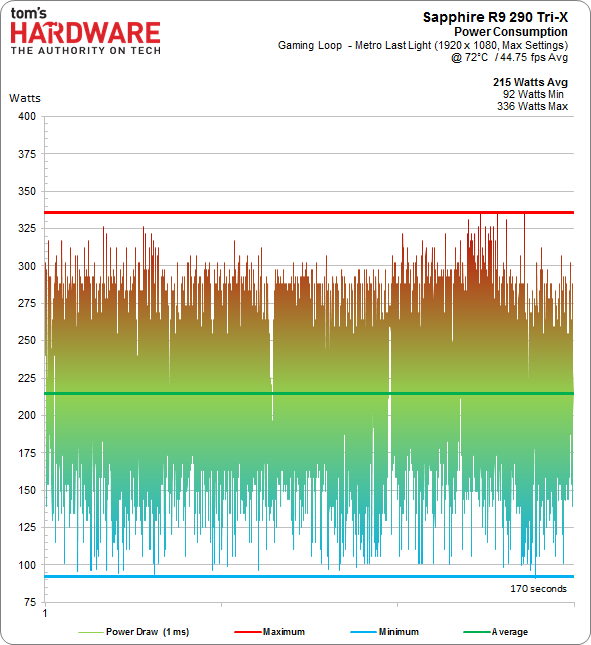
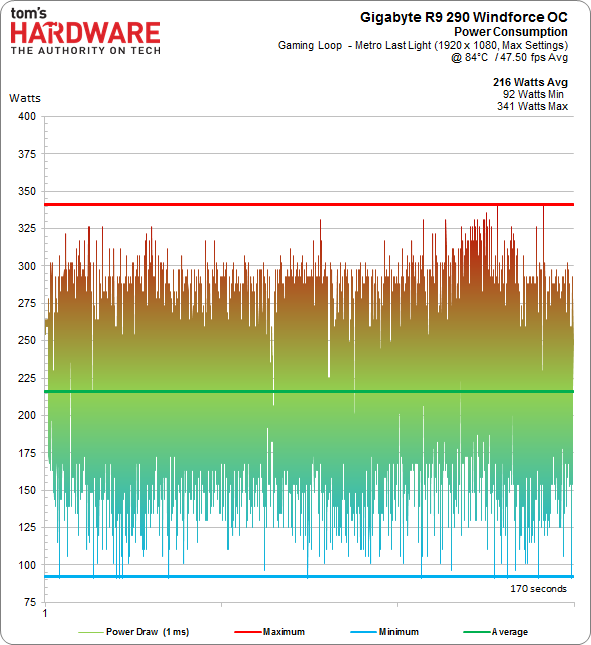
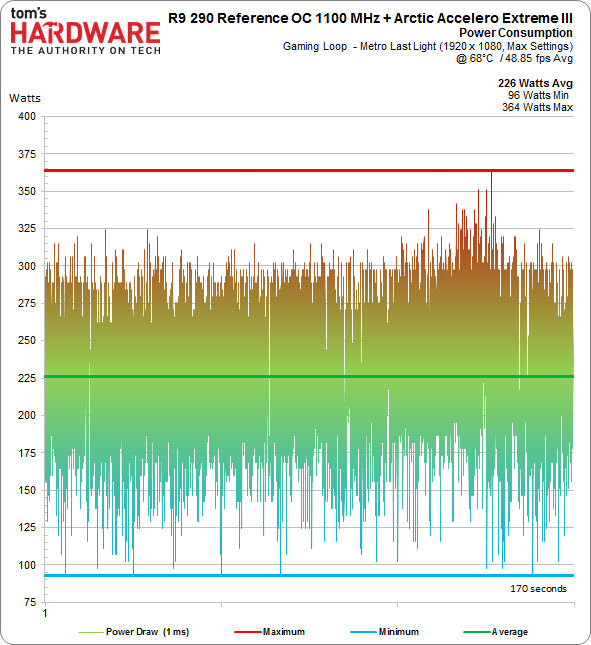
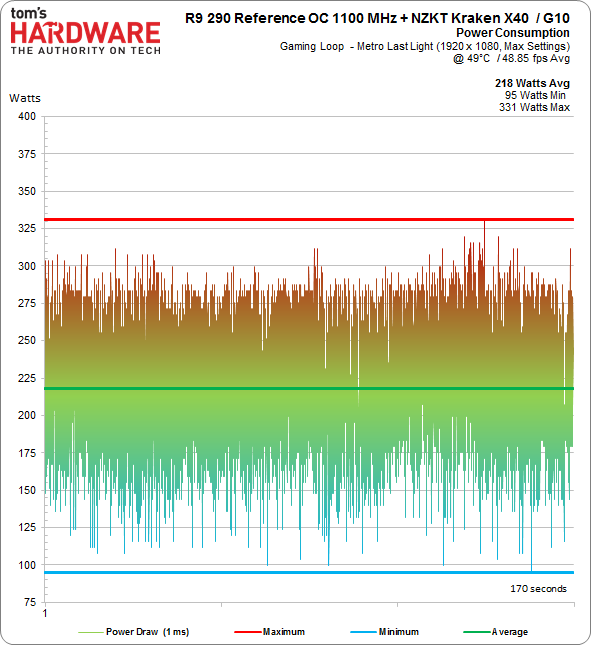
Power Consumption: Radeon R9 290X
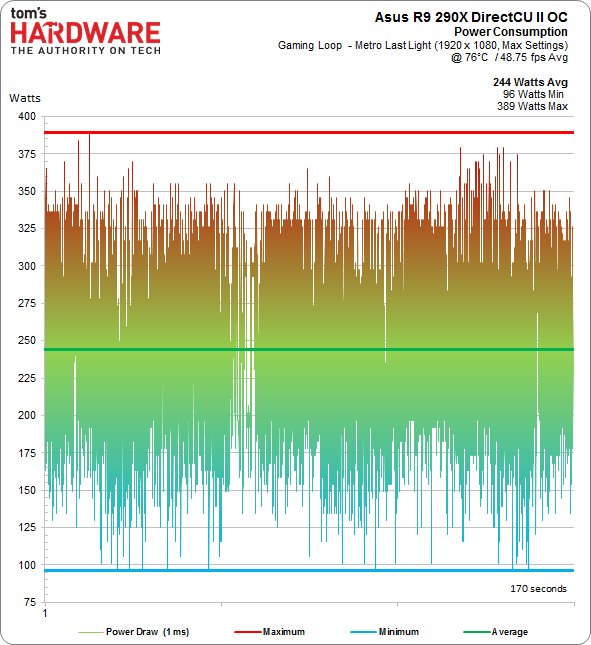
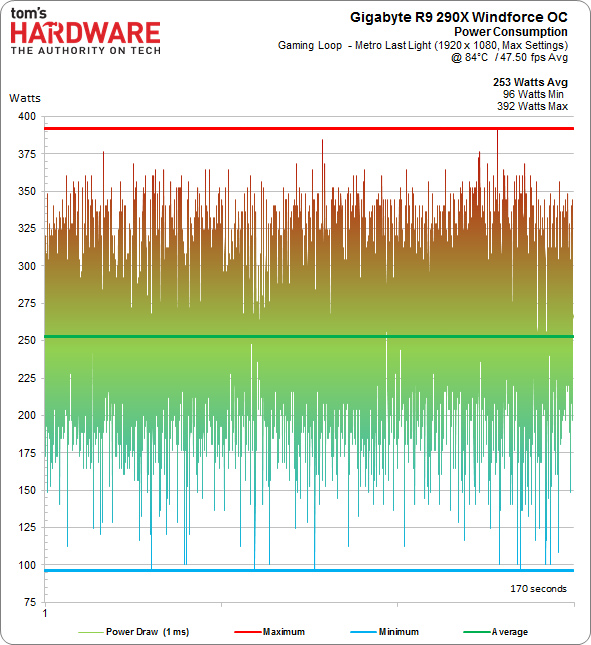
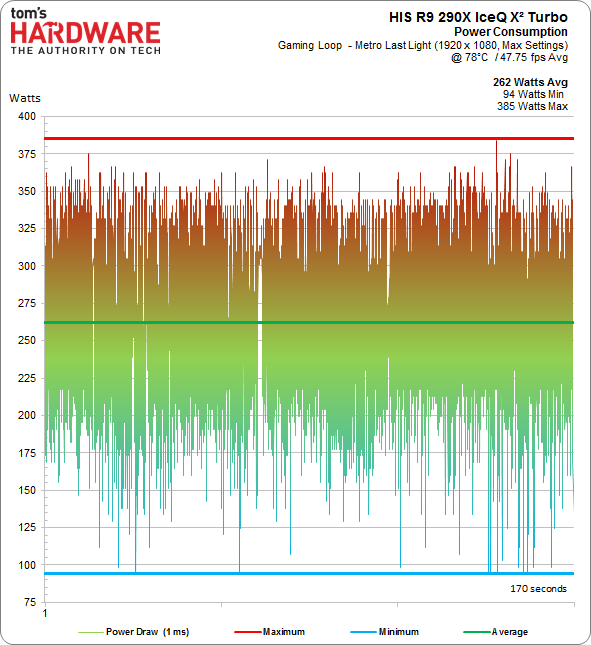
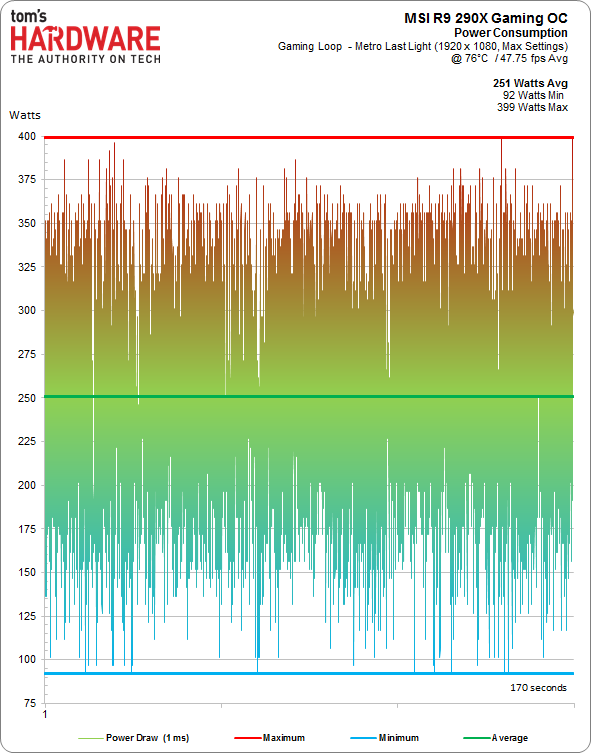
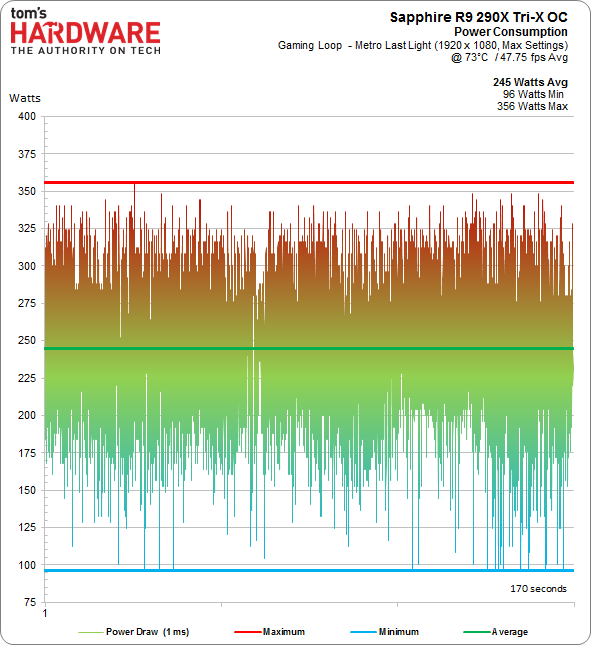
Get Tom's Hardware's best news and in-depth reviews, straight to your inbox.

Igor Wallossek wrote a wide variety of hardware articles for Tom's Hardware, with a strong focus on technical analysis and in-depth reviews. His contributions have spanned a broad spectrum of PC components, including GPUs, CPUs, workstations, and PC builds. His insightful articles provide readers with detailed knowledge to make informed decisions in the ever-evolving tech landscape
-
yannigr You can write as many articles as you want about 290/290X coolers. You can write as many excuses as you want. You can continue reminding us that there was/is a problem with Hawaii every 15 days for the whole 2014. That "victory dance" that "excitement" that you found(?) AMD cheating(?) back then, all that rage against AMD, can not be unwritten.Reply -
FormatC Replyall that rage against AMD
I would like to know this more precisely please... I can't found any rage in my articles, only a chip with a very high temperature density and a lot of unusable coolers because the engineers were not able to build a matching cooler for this cards. This high density will be a global problem for all next-gen chips too. Without a vapor chamber this won't work. -
outlw6669 Good job on the review Tom's German team and great work from AMD's partners!Reply
Coupled with other recent reviews, Sapphire's Tri-X OC series looks to be great cards, especially when you make a custom fan curve to further reduce idle and load noise.
I can not wait to see the 20nm updates, especially if AMD gets around to pulling a Titan with their reference coolers! -
FormatC I will add in the next days more cards like Gigabyte's R9 290 (without X), the MSI R9 290X and something other (secret) :)Reply -
rdc85 I think this card is made/means to be WC -ed..... 290 in Kraken looks promising.. (trying imagine how good if in full water block, good radiator)Reply -
roymustang The main problem with the 290 and 290X isn't the cooling, it's the fact that bitcoin and litecoin miners have driven the price of these cards up by $100-150; to the point where they are no longer a good deal at all.I was waiting for the custom cooled 290s to come out to upgrade my GTX 670 but now I may just wait for the next cards and maybe stick with nVidia.Reply -
Phillip Wager i want so badly the 290 to go back to 400 bucks cuz that is like my hard limit on a video card ive been waiting but i don't think i can wait much longer and i guess i'll just get a 770. i'm even willing to put up with the reference coolers bah.Reply -
patrick47018 "You can see this in the image below, where two of the heat pipes don't **tough** Hawaii at all, and two others make partial contact. " Spelling mistake, on topic I like the Sapphire Toxic's design and performance.Reply